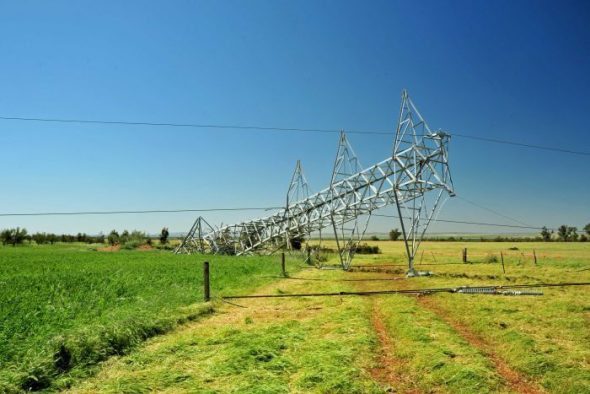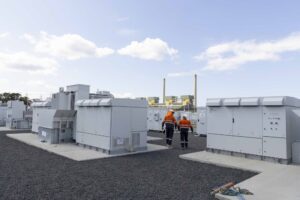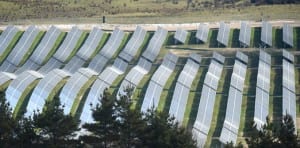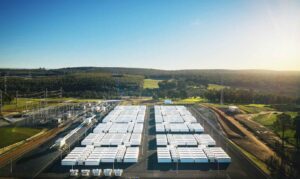In some political and media circles, the power woes experienced by South Australia in September have been cause to question the reliability of distributed renewables. For many consumers, however, these events have had precisely the opposite effect.
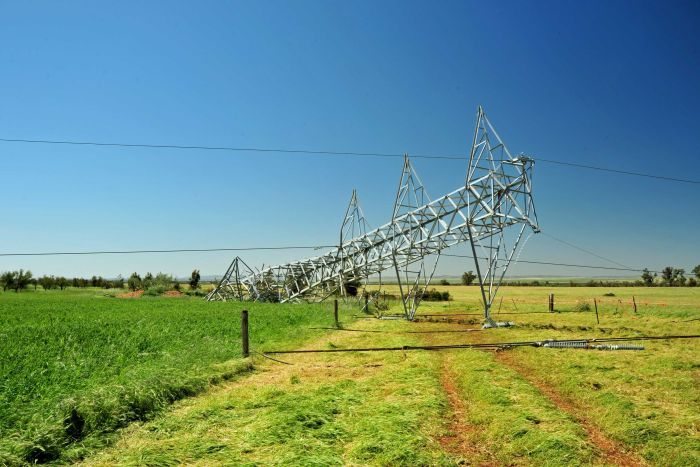
According to the solar and storage industry, the electrical outages caused by severe storms, both in South Australia last month and in Victoria last week, have resulted in a spike in Australian households inquiring about battery storage for security of supply. And not just from those affected by the outages, but by households and small businesses elsewhere in Australia who want to ensure the same thing doesn’t happen to them.
For Off-Grid Energy Australia, whose head office is in Adelaide, staff have had trouble keeping up with the phone calls in the weeks following the South Australian outage.
“With all the talk of renewable energy being the cause of the issue, I find it really heartening that people are coming to renewable energy as the solution to the problem,” said Off-Grid’s Emily McMahon in an interview with One Step Off The Grid on Tuesday.
“Energy security is definitely on people’s wish-list for what they want in their battery storage system.”
McMahon said most of the people calling had a fairly good knowledge about battery storage, and wanted to add it on to existing solar systems.
“We’ve had a lot of inquiries about the Tesla Powerwall,” McMahon said. “Also the (Redflow) ZCell is getting a lot of attention. People love that it’s Aussie. That’s been really great. If people call up asking for a specific product, those are usually the ones they ask about.
“And a lot of people are talking about complete grid defection,” she added. “It’s about owning their own system and controlling their own power supply.”
McMahon noted that usually, despite the company’s name, Off-Grid Energy recommends most customers stay connected to the grid, at least as a back-up generator. But “some people have just made up their mind, that’s what they want to do,” she said.
For James Graham, whose Victoria-based company Standard Solar ordered the first two shiploads of Reflow’s ZCell residential batteries, there has been a discernible shift in thinking among consumers as more and more look to install battery storage.
“I do think there’s been a big shift in the primary focus in why people are looking to storage,” Graham told One Step Off The Grid, also on Tuesday. “Prior to these blackouts, people were conscious they were about to lose their FiT, and were looking at battery storage as an option to continue their good return from solar,” he said.
“That’s still a major driver, but now it is also in consideration as a back-up for loss of mains.”
Graham said that, already, quite a number of his company’s clients were, in a sense, “autonomous” from the grid: “Still connected, but wouldn’t be affected by a black-out.”
And while that function of a battery system is difficult to put a dollar value on for residential customers, for some commercial customers, it is an instant value add.
“One of our first ZCell installations in Victoria will be a medical centre with vaccines in the fridge,” Graham told One Step. “For them, a black-out for just one hour could lead to $5,000 in losses, due to non-operational doctors. This cost goes up dramatically hour after hour, once vaccines start spoiling, etc.”
Graham said the customer in question had actually factored into his return on investment (ROI) in the battery a “very conservative” annual saving of $10,000 of “not-lost time” that made his $38,000 purchase seem very sensible.

“In a domestic or a residential application, you’ll (still) struggle to make the numbers stack up, but that will change soon,” he said. “In two to three-years’ time, regardless of battery costs, it will make sense simply due to the high cost of other things, like electricity.”
For Rod Scott, whose inverter company Selectronics contributed its SP PRO to the Dandenongs solar and storage system that kept the parents of a 12 week-old baby in power during the Victorian blackouts, there has been a spike in interest in battery storage since the storms – but that is on top of the interest that was already mounting.
“We have seen that change over the years,” Scott told One Step. “When our SP PRO was first released in 2008, for the on-grid market the main driver for battery storage was actually power protection, black-out protection,” he said.
“Since then there’s been a big increase in the on-grid solar and battery storage market, and we’ve seen the reason why people buy it shift from mainly as back-up protection, to nowadays, for self-consumption and autonomy.”
But Scott said the concern for the industry with the emerging “power autonomy” and “energy security” markets, was that not all battery products are created equal when the grid goes down. Indeed, traditionally, there have been two distinct battery storage markets: one for solar self-consumption and load shaving, and one for back up protection.
Scott compares the consumer “misunderstanding” here to a similar one that developed four or five years ago, when solar PV was really “going off the scale.”
“People back then thought that if I’ve got PV, if the grid goes down they thought they’d have power, not knowing their PV would have to disconnect from the grid.”
Similarly, he says, not all battery systems have the capability to island themselves and continue to power the house in the case of grid failure. And if they do, each does it differently.
“For smaller (batteries), there might be limit to just lights on and TV. Others are designed to keep it all running. In commercial applications, sometimes it’s not economically viable to have a whole factory running on batteries but you can power central loads.
“The nice thing about it is the batteries are not just sitting there doing nothing until the power goes off. It’s easier to justify multiple uses like load shaving and solar optimising, as well as back-up” he said.
Scott says that, often depending on the inverter technology used, different battery technologies, like lead-acid, will do better than others in black outs.
“For back-up, you want to be able to get reasonable surges,” he told One Step. “Some of the lithium solutions can be ok, but some have a limit on current draw.”
In these cases, Scott says, “it only takes a couple of seconds for the BMS to shut down and you’ve lost everything.” And some systems have to be manually switched back on to get them back up and running.
“You’ve got to use the right battery for the right application,” Scott said. “When misinformation is given it reflects on the whole industry.
“There’s some great stories out there about people whose battery systems got them through the black-outs, but there’s probably quite a few people out there who were disappointed that theirs didn’t.”
This article was originally published on RenewEconomy sister site One Step Off The Grid. To sign up for the weekly newsletter, click here.

